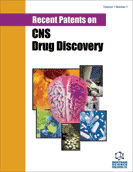-
oa Blockers of Voltage-Gated Sodium Channels for the Treatment of Central Nervous System Diseases
- Source: Recent Patents on CNS Drug Discovery (Discontinued), Volume 2, Issue 1, Jan 2007, p. 57 - 78
-
- 01 Jan 2007
Abstract
Voltage gated sodium channels play important roles both in vital physiological functions and several pathological processes of the central nervous system. Epilepsy, chronic pain, neurodegenerative diseases, and spasticity are all characterized by an over-excited state of specific groups of central neurons that is accompanied by an abnormally increased activity of sodium channels. An efficient strategy of controlling such diseases is to use blockers that preferentially act on these over-excited cells. State dependently acting agents, such as phenytoin, or lamotrigine, leave normal physiological functions relatively intact, resulting in a favorable therapeutic window. Nine isoforms of the channel forming alpha subunit are known, which show distinct expression patterns in different tissues. Another possible way to decrease the chance of adverse effects is to develop agents selectively inhibiting the channel subtype involved in the pathomechanism of the disease to be treated. Many recent patents claim sodium channel blockers with improved characteristics regarding state dependency or subtype selectivity. Such agents may offer a breakthrough in the treatment of a variety of central nervous system diseases. This review focuses on the current trends in sodium channel research, surveying the traditional and newly emerging therapeutic fields, and the diverse medicinal chemistry of sodium channel blockers.


